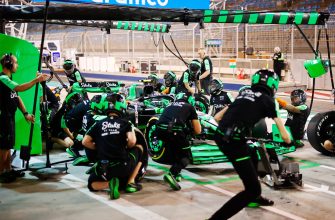You rush to the scene of the accident and see an injured motorcyclist lying motionless on the road – a horror scenario. What should I do? What is the risk of errors?
If a motorcyclist who has been involved in an accident is unconscious, first aiders must remove their helmet. The ADAC points this out. For example, if the biker has vomited, there is a risk of suffocation.
Other dangers include cardiac arrest and brain damage as a result of a lack of oxygen. Necessary ventilation and a stable side position are also not possible with the helmet on.
According to the auto club, one in ten motorcyclists who have an accident suffers injuries to the cervical vertebrae in an accident. That’s why first responders are often unsure whether they should take off the helmet. It is said that the likelihood that the helper will injure the biker’s cervical spine as a result of the removal is low.
Since there are different types of motorcycle helmets, the measures may have to be adapted to the respective helmet. Two helpers are ideal, but if necessary one helper can remove the helmet alone.
This is what a helper does
One helper alone proceeds in the following order, which the Red Cross provides as instructions:
- If necessary, inform patients about the planned measure
- If necessary, turn the patient onto his back
- Kneel on the side of the patient’s head
- Fold up the visor
- If necessary, remove glasses and clear the mouth area (chin cup, head cap)
- Loosen the chin strap of the motorcycle helmet
- Leave the position on the side of the patient’s head and kneel behind the patient’s head in the direction of the patient’s line of sight (patient axis).
- Hold the bottom edge of the motorcycle helmet with both hands
- Pull the motorcycle helmet upwards lengthwise (tilting the edge of the helmet over the patient’s nose) so that you can support the back of the patient’s head with one hand
- With another hand, completely remove the motorcycle helmet and place it to the side (make sure that the patient’s head does not hit the ground)
- Carefully place the patient’s head on the floor with both hands
- Leave the position behind the patient’s head and kneel again on the side of the patient’s head, holding the patient’s head in line with its axis
This is how two helpers do it
- Kneel behind the patient’s head in the patient’s line of sight (patient axis).
- Hold the patient’s helmet and lower jaw with both hands and fix the head in a neutral position
- If necessary, open the folding chin part of the motorcycle helmet
- Hold the bottom edge of the motorcycle helmet with both hands
- Pull off the motorcycle helmet lengthways upwards (tilting the edge of the helmet over the patient’s nose)
- Completely remove the motorcycle helmet and place it to the side
- Hold the patient’s head with both hands (hands are firmly over the ears) and fix it in a neutral position (fingers grasp the corner of the jaw so that the lower jaw is pulled up) and carefully place it on the floor
- If necessary, inform patients about the planned measure
- If necessary, turn the patient onto his back
- Kneel on the side of the patient’s head
- If necessary, fold up the visor
- If necessary, remove and secure glasses
- If necessary, clear the mouth area (chin cup, head cap)
- Loosen the chin strap of the motorcycle helmet
- Support the head and neck area from below in the longitudinal axis with both hands (place four fingers behind and thumb in front of the ear)
- If necessary, adjust the position of the hands to ensure optimal stabilization of the patient’s head and cervical spine
Further first aid measures are then carried out until the emergency services arrive.
As a first responder, can I be punished for mistakes?
The only mistake for which accident witnesses can be punished is standing by and not at least alerting emergency services: the criminal code stipulates a fine or up to one year in prison for failure to provide assistance.
Important!
High-quality helmets offer a clever solution for easy removal. There are small red loops underneath the two cheek pads. By pulling on these loops, the cheek pads can be easily removed, making removing the helmet much easier.
As long as a first aider acts to the best of his knowledge and belief, i.e. gross negligence or intent can be ruled out, he has nothing to fear – nor, by the way, from damage to property if, for example, he tears a piece of clothing belonging to an injured person.
If the helper suffers damage, such as blood on their clothing, the person who caused the accident, the victim or, as a last resort, the statutory accident insurance must pay for it.









